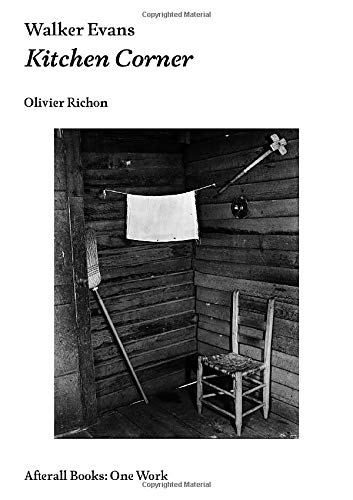
An examination of one of Walker Evans’s iconic photographs of the Great Depression.Kitchen Corner, Tenant Farmhouse, Hale County, Alabama shows a painstakingly clean-swept corner in the house of an Alabama sharecropper. Taken in 1936 by Walker Evans as part of his work for the Farm Security Administration, Kitchen Corner was not published until 1960, when it was included in a new edition of Walker Evans and James Agee’s classic Let Us Now Praise Famous Men. The 1960 reissue of Evans and Agee’s book had an enormous impact on Americans’ perceptions of the Depression, creating a memory-image retrospectively through Walker’s iconic photographs and Agee’s text. In this latest addition to the Afterall One Work series, photographer Olivier Richon examines Kitchen Corner. The photograph is particularly significant, he argues, because it uses a documentary form that privileges detachment, calling attention to overlooked objects and to the architecture of the dispossessed. Given today’s growing economic inequality, the photograph feels pointedly relevant.The FSA, established in 1935, commissioned photographers to document the impact of the Great Depression in America and used the photographs to advertise aid relief. For four weeks in the summer of 1936, Evans collaborated with Agee on an article about cotton farmers in the American South. The result of that project was the landmark publication Let Us Now Praise Famous Men, documenting three sharecropper families and their environment. These photographs were intimate, respectful portraits of the farmers, and of their homes, furniture, clothing, and rented land. Kitchen Corner powerfully evokes Agee’s observations of the significance of “bareness and space” in these homes: “general odds and ends are set very plainly and squarely discrete from one another… [giving] each object a full strength it would not otherwise have.”
| Categorie | Carte straina |
|---|---|
| Magazin | carturesti.ro |
| Marca | Afterall Publishing |
